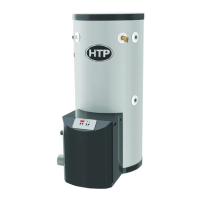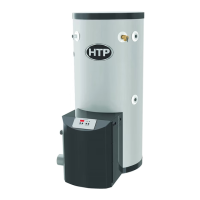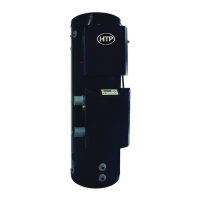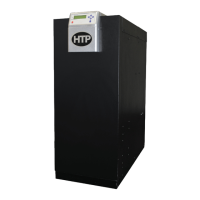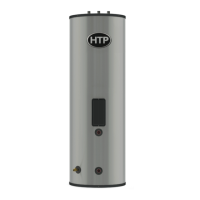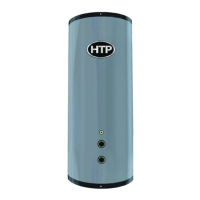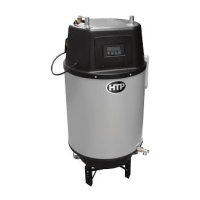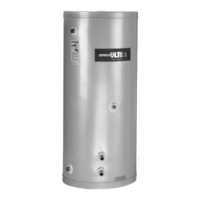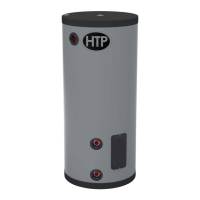LP-454 Rev. 004 Rel. 002 Date 12.1.17
10
G. Prevent Combustion Air Contamination
Install intake air piping for the heater as described in the Venting
Section, this manual. Do not terminate exhaust in locations that can
allow contamination of intake air.
Ensure that the intake air will not contain any of the contaminants
in Table 2. Contaminated air will damage the heater, resulting in
possible substantial property damage, severe personal injury, or
death. For example, do not pipe intake air near a swimming pool
or laundry facilities. These areas always contain contaminants.
Products to Avoid
Areas Likely to Have
Contaminants
Spray cans containing
uorocarbons
Dry cleaning / laundry areas
and establishments
Permanent wave solutions Swimming pools
Chlorinated waxes / cleaners Metal fabrication plants
Chlorine-based swimming pool
chemicals
Beauty shops
Calcium chloride used for thawing Refrigeration repair shops
Sodium chloride used for water
softening
Photo processing plants
Refrigerant leaks Auto body shops
Paint or varnish removers Plastic manufacturing plants
Hydrochloric or Muriatic acid
Furniture renishing areas
and establishments
Cements and glues New building construction
Antistatic fabric softeners used in
clothes dryers
Remodeling areas
Chlorine-type bleaches, laundry
detergents, and cleaning solvents
Garages and workshops
Adhesives used to fasten building
products
Table 2 - Products and Areas Likely to Have Contaminants
NOTE: DAMAGE TO THE HEATER CAUSED BY EXPOSURE TO
CORROSIVE VAPORS IS NOT COVERED BY WARRANTY. (Refer to
the limited warranty for complete terms and conditions.)
H. Removing a Heater from a Common Vent System
Failure to follow all instructions can result in ue gas spillage and
carbon monoxide emissions, causing severe personal injury or
death.
Do not install the heater into a common vent with any other
appliance. This will cause ue gas spillage or appliance
malfunction, resulting in possible substantial property damage,
severe personal injury, or death.
Failure to provide an adequate supply of fresh combustion air can
cause poisonous ue gases to enter the living space, resulting
in severe personal injury or death. To prevent combustion air
contamination, see Table 2.
Figure 3 - CO Warning Label
In the Commonwealth of Massachusetts and As Required by State
and Local Codes:
Installation of Carbon Monoxide Detectors: At the time of installation
or replacement of the vented gas fueled appliance, the installing
plumber or gas tter shall observe that a hard wired carbon monoxide
detector with an alarm and battery back-up is installed on the oor
level where the gas appliance is installed, unless the appliance is
located in a detached, uninhabitable structure separate from the
dwelling, building, or structure used in whole or in part for residential
purposes.
In addition, the installing plumber or gas tter shall observe that a hard
wired carbon monoxide detector with an alarm and battery back-up is
installed on each additional level of the dwelling, building, or structure
served by the vented gas appliance. It shall be the responsibility of the
property owner to secure the service of qualied licensed professionals
for the installation of hard wired carbon monoxide detectors.
a. In the event that the vented gas fueled appliance is installed in a
crawl space or attic, the hard wired carbon monoxide detector with
alarm and battery back-up shall be installed on the next adjacent
oor level.
b. In the event that these requirements cannot be met at the time
of completion of installation, the owner shall have a period of thirty
(30) days to comply with the above requirements; provided, however,
that during said thirty (30) day period, a battery operated carbon
monoxide detector with an alarm shall be installed.
Do not attempt to vent this water heater by any means other than
those described in this manual. Doing so will void the warranty and
may result in severe personal injury or death.
Approved Carbon Monoxide Detectors: Each carbon monoxide
detector as required in accordance with the above provisions shall
comply with NFPA 70 and be ANSI/UL 2034 listed and IAS certied.
F. Carbon Monoxide Detectors
When removing an existing heater, follow the steps below.
1. Seal any unused openings in the common venting system.
2. Visually inspect the venting system for proper size and horizontal
pitch to determine if there is blockage, leakage, corrosion, or other
deciencies that could cause an unsafe condition.
3. If practical, close all building doors, windows, and doors between
the space in which the water heater remains connected to the
common venting system and other spaces in the building. Turn on
clothes dryers and any appliances not connected to the common
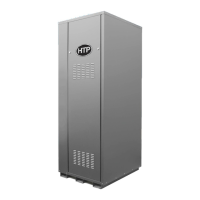
